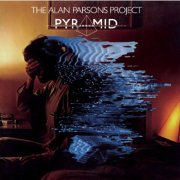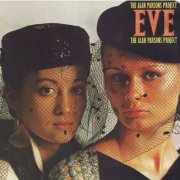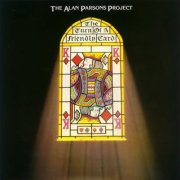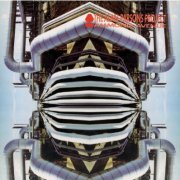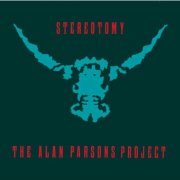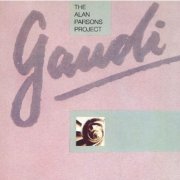2009 Reissue Project
Many of the bonus tracks on six newly reissued APP albums from the late 1970s and early 1980s reveal the fascinating work process that Parsons, Woolfson & Co. used when making the music. Some of the original tracks sound dated, others remain lush and beautiful, and of course, there are the hits: Catchy mid-tempo pop of the highest order. Including experimental instrumentals on records was ballsy then, and those cuts remain interesting now. We forget how Stereotomy was the band's first digital album, a beta test of cutting-edge technology; most records that came before were analog. We forget, because Parsons' genius was creating the amazing audio soundscapes we now take for granted – except he was working without the aid of a Macintosh laptop and ProTools. Kind of like when that Ford dude made an entire motorcar with screwdrivers, a pair of tin snips, and his wits, and then invented the assembly line for good measure. What is commonplace today in popular music evolved from studio trailblazers like Alan Parsons.
Pyramid
- Rock/Pop
- 1978
- Buy the CD
Like its two predecessors, Pyramid was nothing if not ambitious. Unfortunately, the grand designs weren’t quite realized in the results, which though stirring, stunning and hewing to the symphonic style Parsons had purveyed with Pink Floyd in particular, occasionally seemed somewhat perfunctory. It had its memorable moments – the surging pulse of "What Goes Up," the cooing "The Eagle Will Rise Again," the overtly assertive "One More River" – but when measured against the handful of hits that would come later, like "Eye in the Sky" or "Games People Play," it was a relative non-starter. Down to a more or less core combo – the band Pilot, a Parsons prodigy, is pretty much the core backing band – it relied less on big name cameos (former Zombie Colin Blunstone and John Miles being the exceptions) and more on lesser-known singers who sounded more homogenized. Even its concept, based on the power of pyramids, appeared redundant. It also didn’t help when critics claimed he was recycling an image sewn on Floyd’s Dark Side of the Moon five years before, given that pyramids figured prominently in that album’s graphic design.
Regardless, Pyramid still holds up remarkably well 30 years later, both in terms of production craft and the seamless execution. The reissue’s ample array of bonus offerings – demos, backing tracks and alternate versions – though unessential, provide additional insight into the imagination and instrumentation that yielded Parsons’ stately pastiche.
~ Lee Zimmerman
Eve
- Rock/Pop
- 1979
- Buy the CD
What a bunch of pompous nonsense. Eve was one of the Project’s biggest hits, but for the life of me I can’t figure out why. Apparently people loved sending things such as the opening monstrosity "Lucifer" straight to Number One back then. How righteously APP try to rock it out on the silly "You Lie Down With Dogs" and "I’d Rather Be A Man." I know, this is supposed to be classic stuff, but it’s so sterile and vacuous that it’s hard to find the appeal here. The one shining moment is Clare Torry’s lead vocal on "Don’t Hold Back." Had Torry been the main vocalist on this album, it may have actually been more interesting. But faceless producers with faceless singers make mere product. Some have argued the same about groups like Steely Dan – but there really is no soul to this stuff. There are seven bonus tracks tacked on, which are basically worthless early demos (two of them for "Lucifer" alone). Hardcore fans will be eager to hear "Elsie’s Theme from The Sicilian Defence," taken from an album recorded at the same time as Eve and consisting mainly of atonally-based pieces. It was supposed to break APP from their contract with Arista, but it didn’t work. Surprisingly, neither does Eve after all these years. Truly a product of the excessive side of the ‘70s. You just had to be there.
~ Jason Thompson
The Turn of a Friendly Card
- Rock/Pop
- 1980
- Buy the CD
The Turn of a Friendly Card was the group’s fifth album, and spawned two of their biggest hits—"Games People Play," which marries bouncing synth parts with the haunting melody and harmony created by Lenny Zakatek’s vocals and some amazing guitar work, and "Time," sung by Woolfson himself, a sad admission of mortality and a beautifully produced track that resembles Dark Side of the Moon more than anything the duo had produced before. As with other albums by this talented team, The Turn of a Friendly Card is a concept album; this time about how gambling and other temptations affect everyday life, with the title "track" is nicely divided into five distinct sub-tracks. Undoubtedly, Parsons and Woolfson know how to provoke thought while keeping their eyes on the target of making great music. As for the bonus tracks on this digitally re-mastered release, they are merely rough mixes of these tracks before and after vocal takes were added, and nothing really worth getting too excited about.
~ Mike Farley
Ammonia Avenue
- Rock/Pop
- 1984
- Buy the CD
After crushing the band's previous single and album sales marks with Eye in the Sky and its title track, the Alan Parsons Project came up with an even bigger-selling album and single, "Don't Answer Me"...bigger sellers in England, that is. Clearly, the Brits got it right, because this is the most listenable, coherent, and solidly pop record Parsons and partner Eric Woolfson put together. "Don't Answer Me" and its castanets (freaking castanets!) still are a charming package, and "Prime Time" chugs along with a steady Woolfson "Eye in the Sky"-style vocal and that Parsons-ified Wurlitzer piano – who knows what filters he used to get the keyboard Ray Charles played in "What'd I Say" to become a signature sound (think "Eye in the Sky's" plinky countermelody that kicks in at the start, in front of the wheezing guitars) that's all over Ammonia Avenue, too. "One Good Reason" and its sparkly rhythm track, coupled with Woolfson's defiant vocal, makes living and re-living some painful lover's argument an almost joyful experience. But enough about the original songs--the bonus material doubles the number of tracks (almost) from nine to 17. Great stuff here, giving us a peek under the hood: demos and rough mixes, a Woolfson guide vocal version of "Since the Last Goodbye" – which Chris Rainbow ended up singing on the record – and a majestic 30-second vocal-only snippet of Rainbow's "Goodbye" chorus track. You get all that, and the orchestral track to "Ammonia Avenue," arranged and conducted by Andrew Powell. Well worth the cost of buying it over again, 2009 style.
~ Mojo Flucke, Ph.D.
Stereotomy
- Rock/Pop
- 1985
- Buy the CD
This record's for Alan Parsons Project completists. Not to say that it's bad. It's just that, at the time of its release, it was recorded on all digital equipment. That was revolutionary at the time, but so was Casio's CZ "pro" synths line, and for that matter, Murray Head and Toni Basil. The record does have a couple good tracks: For one, Procol Harum's Gary "Whiter Shade of Pale" Brooker sings a solid lead vocal on "Limelight." "Beaujolais" still crackles with that pad-Thai-flavored, Asian new-wave pop harmony and rhythm thing it always had going for it. Sadly, the grand title track and album opener plays harsh and sterile today, rather than stark and powerfully ominous as it did back then. The instrumentals, however – the smooth "Urbania," mellow "Chinese Whispers," and '80s-style psychedelia "Where's the Walrus?" – all kick ass, post-remaster. Still, that's not enough to justify buying this disc. The bonus tracks, however, positively save the reissue from the "ignore" pile, thanks to the title track variation with Eric Woolfson singing lead (semi-soundalike John Miles sang lead vocal on the original) from back in the day, answering the "What if?" questions APP fans have been asking themselves all these years. After all, Woolfson's singing is the sound of the Alan Parsons Project – "the brand," if you will – and it confounded us when the Project's brain trust chose alternate lead singers for key tracks.
~ Mojo Flucke, Ph.D.
Gaudi
- Rock/Pop
- 1987
- Buy the CD
By 1987, the steam was coming out of the collaboration between Eric Woolfson and Alan Parsons. Their last effort, Gaudi – like most Project albums – featured an interesting concept; in this case, Spanish architect Antonio Guadi’s obsession with work and lack of balance in his life. The album boasts progressive and heady arrangements, but lacks the hooks present in much of their previous work – Gaudi didn’t contain a single like earlier releases did; there’s no "Don’t Answer Me," "Games People Play," or "Eye in the Sky." For hardcore Project fans, it still features enough stellar production and interesting music (like the Spanish guitar and French horns on the closing track, and instrumental "Paseo De Gracia") but it lacks the "pop" ingredient in "progressive pop." "Standing on Higher Ground," featuring the vocals of Geoff Barradale (from Vitamin Z), delivers the most memorable track on the record – it stands up well today in spite a Jan Hammer-like keyboard part with an obvious ‘80s timestamp. The extras included on the reissue are mostly demo tracks or rough mixes with scratch vocals. The essay material inside the liner notes is informative, but this really is for those devoted to the APP; nothing here will have much appeal outside Parsons’ dedicated fanbase.
~ Robert Smola.
You can follow us on Twitter and Facebook for content updates. Also, sign up for our email list for weekly updates and check us out on Google+ as well.













